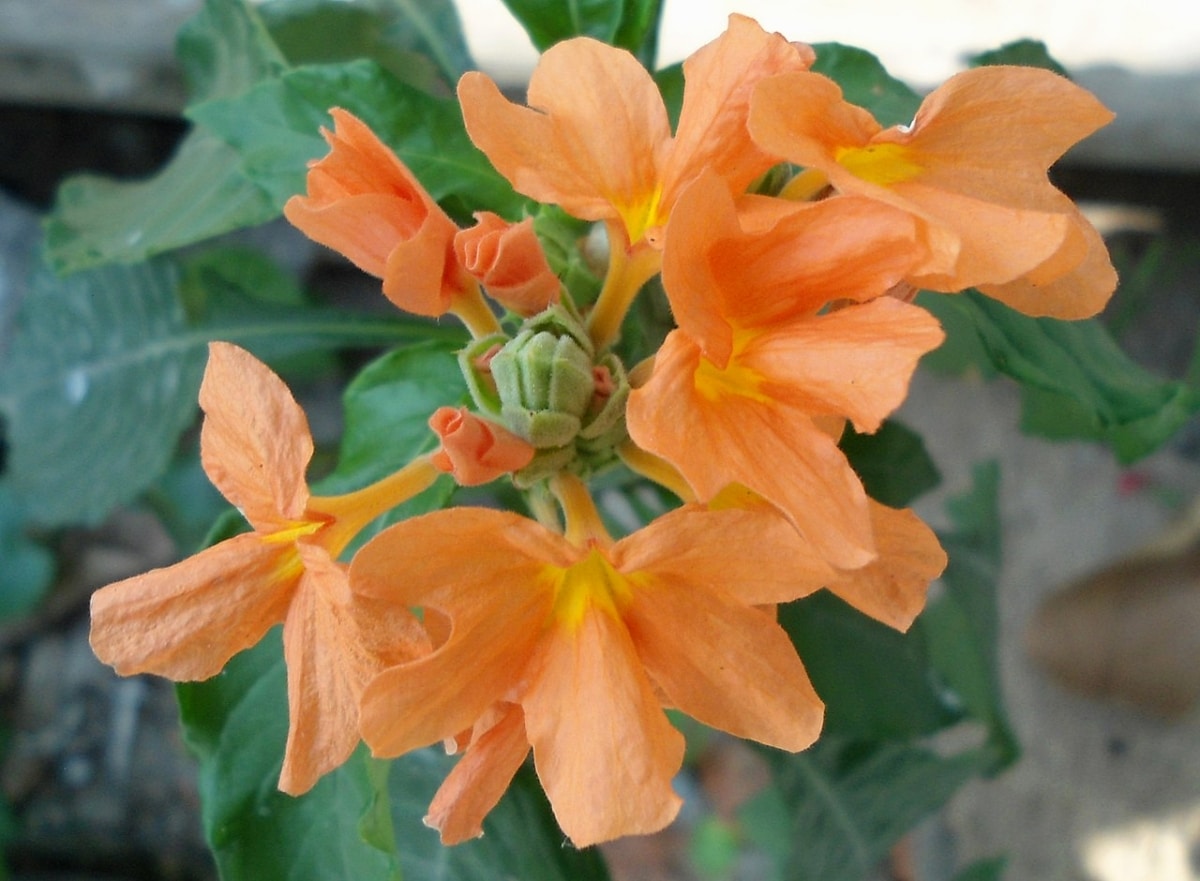
Image - Wikimedia / Adityamadhav83
La Crossandra infundibuliformis It is a small but very interesting plant, which can be in a tropical garden, or inside a house where a lot of light from outside enters. And it is that it produces flowers of great ornamental value, very numerous.
But due to its place of origin, it can become difficult to keep her alive and healthy. For this reason, it would not be unusual to buy it, for example, in spring, and see how autumn arrives and it already begins to wither. Is it possible to prevent this from happening?
Where does it originate from? Crossandra infundibuliformis?
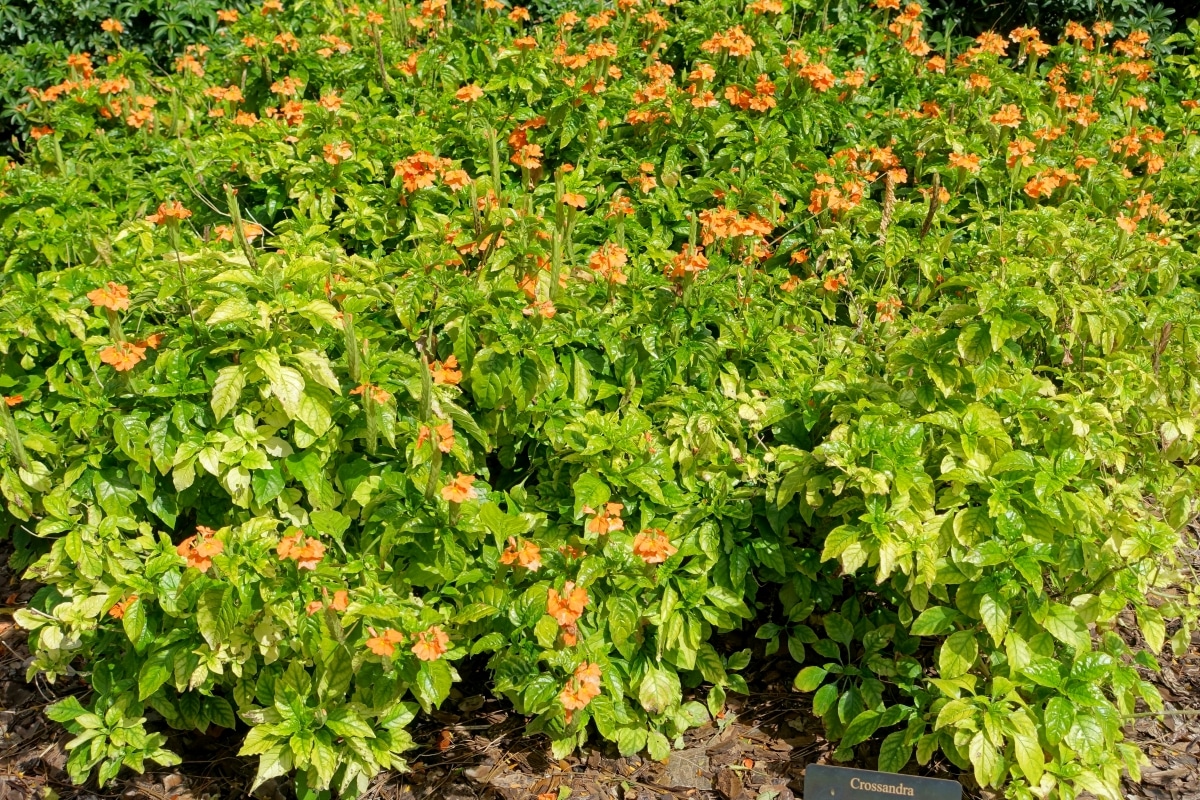
It is a shrubby species native to the tropical region of India.. Likewise, it is also possible to see it in Thailand and Sri Lanka. Today, in addition, it has become naturalized in Central America, where the climatic conditions are very similar to those in its place of origin.
For this reason, it is a delicate plant when you have a region where the climate is temperate, since it has a hard time when the cool arrives. But that should not discourage us, since if we give it some care that we will explain later, it will not be difficult for us to maintain it.
What are their characteristics?
La Crossandra infundibuliformis it is a short-lived perennial plant (it can live about 3 years) that reaches half a meter in height. The leaves can be egg-shaped or somewhat longer and thinner. These measure up to 17 centimeters long by 5 centimeters wide, and are green with whitish nerves.
Its flowers are orange or yellow, and are grouped in terminal inflorescences. They sprout throughout the spring. The fruit is an elliptical shaped capsule containing small seeds.
How to take care of Crossandra infundibuliformis?
La crossandra it is a plant that can be very demanding. It needs a lot of light, warm (but not extreme) temperatures and high air humidity to do well; that is, to live (and not survive). So let's see what care it needs whether we are going to have it outside, or if we choose to have it inside the house:
Location
Where should it be placed? This will depend on whether we prefer to have it outside or inside, but in any case, it is important that it does not lack light. Therefore, if you are going to be at home, your ideal location will be that room with windows that faces east, which is where the sun rises; in this way, you will have the light you need.
And if, on the contrary, we are going to put it outdoors, it must be in a place where there is a lot of light, but not direct sun.
Pot or soil?
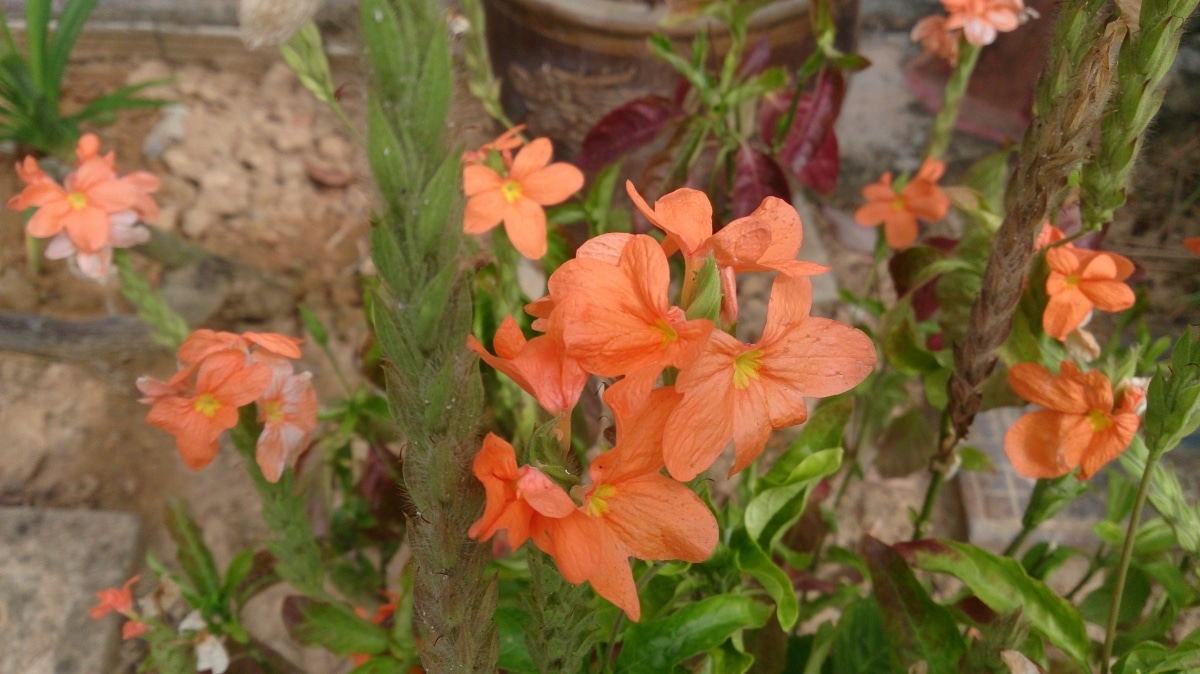
Image - Wikimedia / Mokkie
La Crossandra infundibuliformis, since it does not resist the cold, many times it is chosen to have it in a pot. In this way, it is easier to change its place if necessary, taking it from the terrace to the living room for example. Now, even if it is cold in winter in your area, you can choose to plant it in the ground without removing it from the pot and have it there during spring and summer; later, you will only have to extract it by separating the earth.
And speaking of land, which one do you need? Well, it is a plant that it must be put in a soil or land whose pH is neutral or acid. Thus, if it is going to be in a pot, a substrate for acid plants such as this; and if it is going to be in the garden, it will be important to check the pH of the soil before planting it in it. We can do this with a meter like this for example, or in a homemade way as we explain in this article:
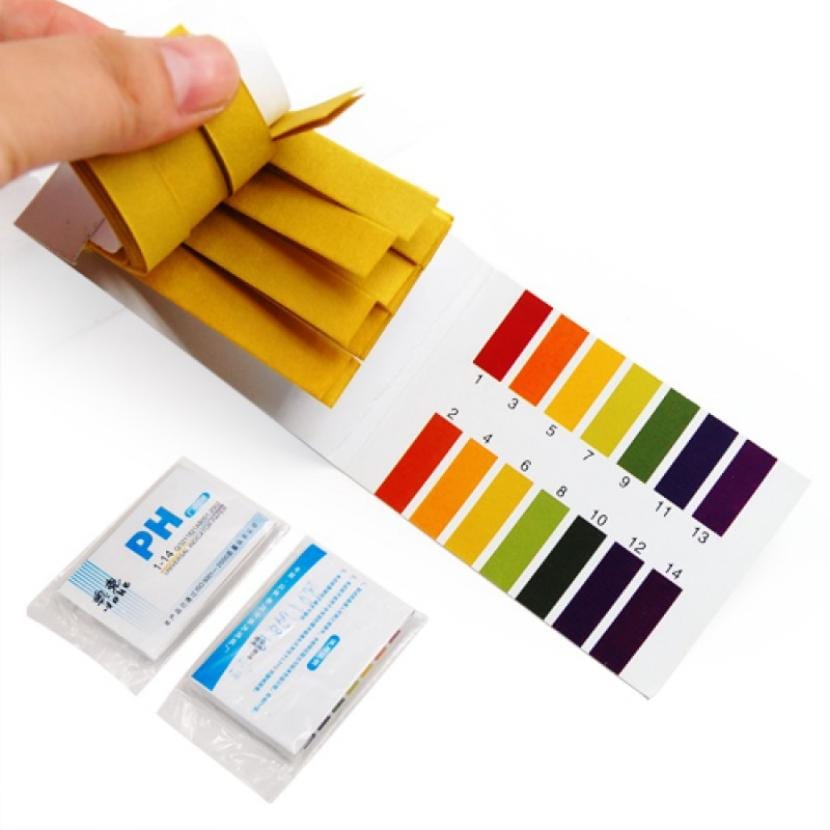
Irrigation
You have to water the crosandra with fresh water, which is fit for consumption. If it is watered once with hard water, that is, with one whose pH is very high (8 for example) nothing will happen to it, but it is very important to avoid it so that the leaves do not lose color and, also, so that can flourish without problems.
In addition, we will have to water it several times a week during the summer, but less during the rest of the year. This is so because during the warm months the land dries out faster than in winter.
Subscriber
The time to pay it is from spring to summer, because that is when it is growing. If the climate is tropical, that is, if there are no frosts, it can be fertilized throughout the year, because in those conditions it is easy for it to bloom for longer.
But what to use? To get it to bloom, what we will do is fertilize it with a fertilizer that contains phosphorus and potassium, since these two nutrients are essential for it to produce flowers. And luckily, we will not have much difficulty finding one, since any fertilizer for flowering plants will do.
In the event that we want to pay it with fertilizers of natural origin, then we recommend the guano (on sale here). But be careful, because it is very concentrated and, if you exceed the dose indicated on the package, the roots of the plant will burn.
Multiplication
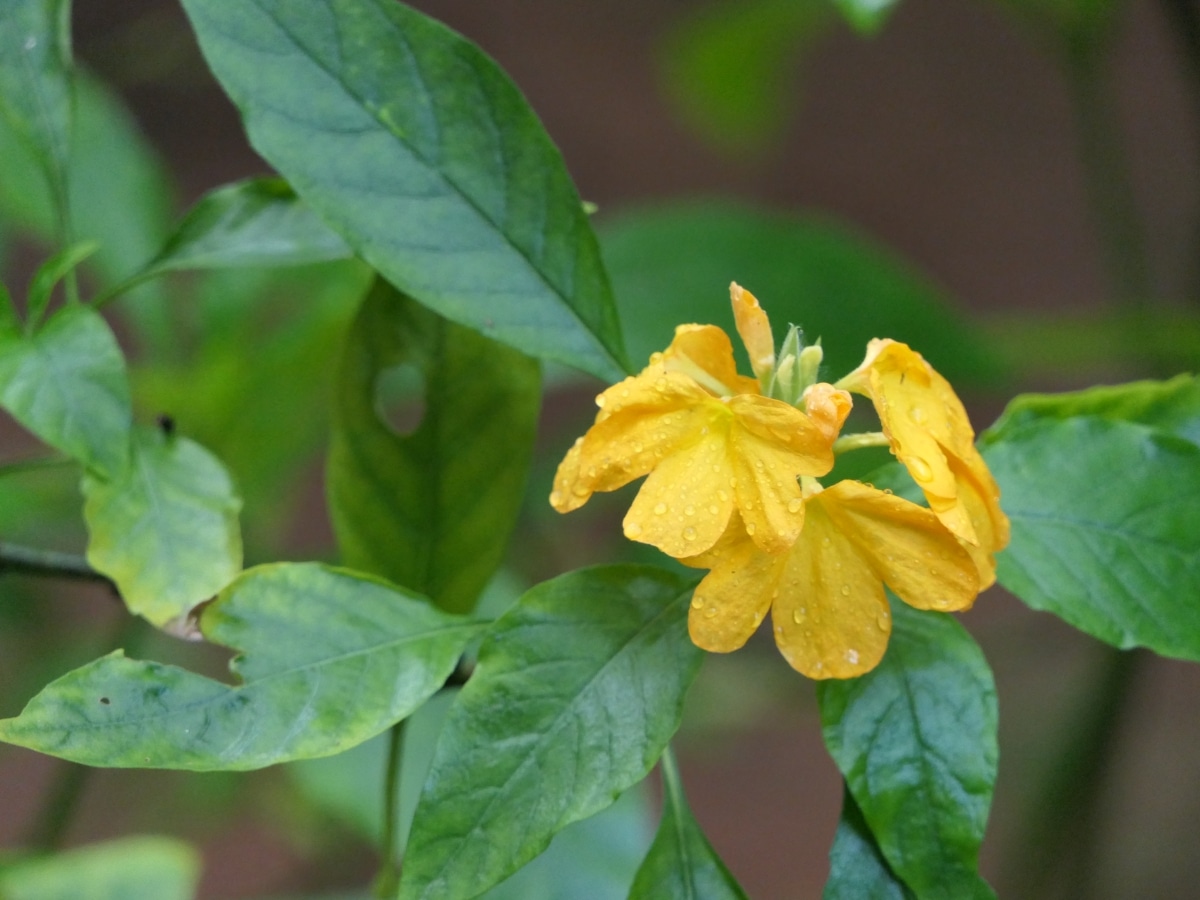
Image - Wikimedia / Dinesh Valke
La Crossandra infundibuliformis multiplies by seeds in spring. These are planted in pots with seedling soil, and covered with a thin layer of it. Then, the seedbed is placed outside, in a place where there is a lot of light but not direct light, and finally it is watered from below (that is, putting a plate under it and filling it with water).
Rusticity
It is very, very sensitive to cold. The minimum temperature that it supports is 10ºC.
What do you think of crosandra?